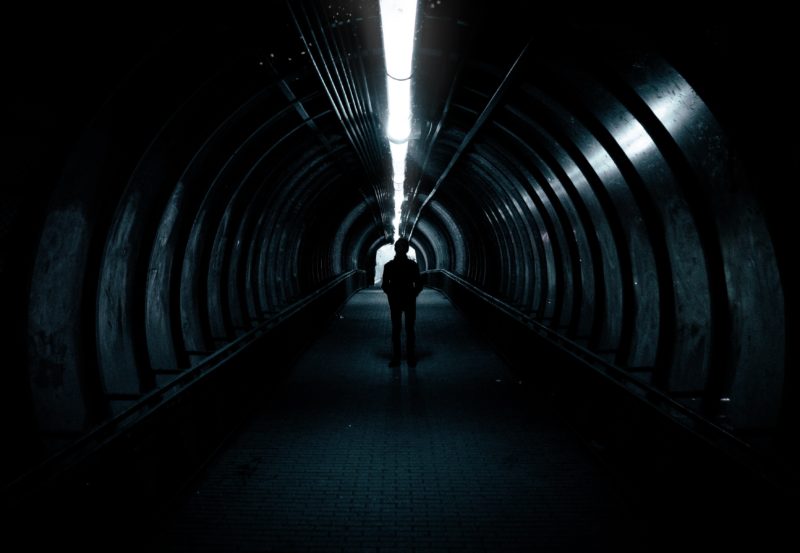
Those who have endured the “Dark Night of the Soul” hold on to strands of hope. In the deepest, darkest moments of despair, we dare to hope and pray for an hour or a day free of the choiceless sorrow, outrage, and overwhelming grief that accompany the death of a child.
We’re reassured by others, of course, that there’s “light at the end of the tunnel,” “time heals all wounds,” and we will “rise from the ashes.” This is good news. We want to believe that life will somehow go on and say, “Okay, I’m on board!,” forging ahead bravely in search of the light.
But what does this really mean? What is a light? A real light, not an artificial one? What is a tunnel—a real tunnel? And where is it? How long will it take to get to the light, and what are we supposed to do in the meanwhile? The inquiring minds and broken hearts of bereaved parents want to know, “Do we ever really heal? Feel joy again? See beauty? Open our hearts to love again? Or, is it possible to make peace with life itself? Is there real cause for hope? If there is, how can we cultivate it when all we feel is pain?”
Skeptics of “the light” claim, “There is no light. It’s a lie. We never get over the deaths of our children. We’re screwed!” To fight off the debilitating despair, they say, we brainwash ourselves into believing we can be whole again, even if our hearts are broken. The light, they believe, is nothing more than a collective myth. The tunnel, a mirage. We drink the Kool-Aid and survive by dumbing and numbing ourselves down, telling one another fairy tales and convincing others we’re “back” when we know we’re still a sad mess. We put on the mask, nod, and smile in all the right ways. And we pass for normal.
This form of disingenuous self- deception may not be a good long-term solution for coping or healing, but it helps some of us get by in the short term. “It beats the hell out of staring into the abyss,” is how one parent put it. Skeptics and cynics of the light say, “Healing is an illusion, and even quite presumptuous. When your heart’s been ripped out, it doesn’t grow back.”
So what is the truth? Is hope a fabrication? Is there really a light at the end of the tunnel? Is artificial light different from real light? Are we destined to live out the rest of our lives in despair and heartache? Or rise out of the ashes into a new normal? The answer might surprise you.
Both are true!
We are both broken and whole. Destroyed and healed. Screwed and not screwed. Our children are both gone and with us. Looking at life this way, paradoxically, we go from seeing all things as “either/or” to “both/and.” Both are true!
Viewing our grief this way affords us the much-welcomed safety, permission, and freedom to be exactly the way we are—without apology or fear of being judged. It allows us our integrity and humanity.
We are all hardwired to survive. We are born to be resilient. Our cells are programmed to “live,” and “fight back,” even if/when we hurt so bad we want to die. Our minds scan the universe in search of proof and evidence that life can and will go on. Striving for a new season of life free of pain is what we’re biologically programmed to do—even as our hearts break over the reality that our children’s lives have been lost to them. It’s in our nature to be hopeful. To assure ourselves better days are just around the corner; that our children, now angels, are close; and that newfound meaning is arising, like the morning sun, on the horizon. We are innately faithful.
But there’s more to surviving the death of a child than faith and optimism. We must allow ourselves the time, support, strength, and resources we need to grieve; free ourselves of the quick-fix spin and solutions of our grief-illiterate society; surround ourselves with patient, trustworthy supporters, and work hard, day after day, to fight our way back into life. Making our remaining days an expression of love, rather than sorrow and despair is a noble and honorable quest. Learning to speak to (and treat) ourselves with kindness and self-compassion needs to become a daily practice.
Our sorrow may last a lifetime. We may always be triggered into unexpected meltdowns. Our hearts may always have a big hole in them. We may always walk with a limp (so to speak). And we must summon the courage and faith to love and laugh again, let go and write bold new chapters in our lives with a renewed sense of purpose. Here are a few other ways to bring light into the tunnel, and illuminate your journey through grief. Every step of the way:
Use the chapter locator to find out information about chapters in your area. Locate a Chapter by selecting your state and zip code.


